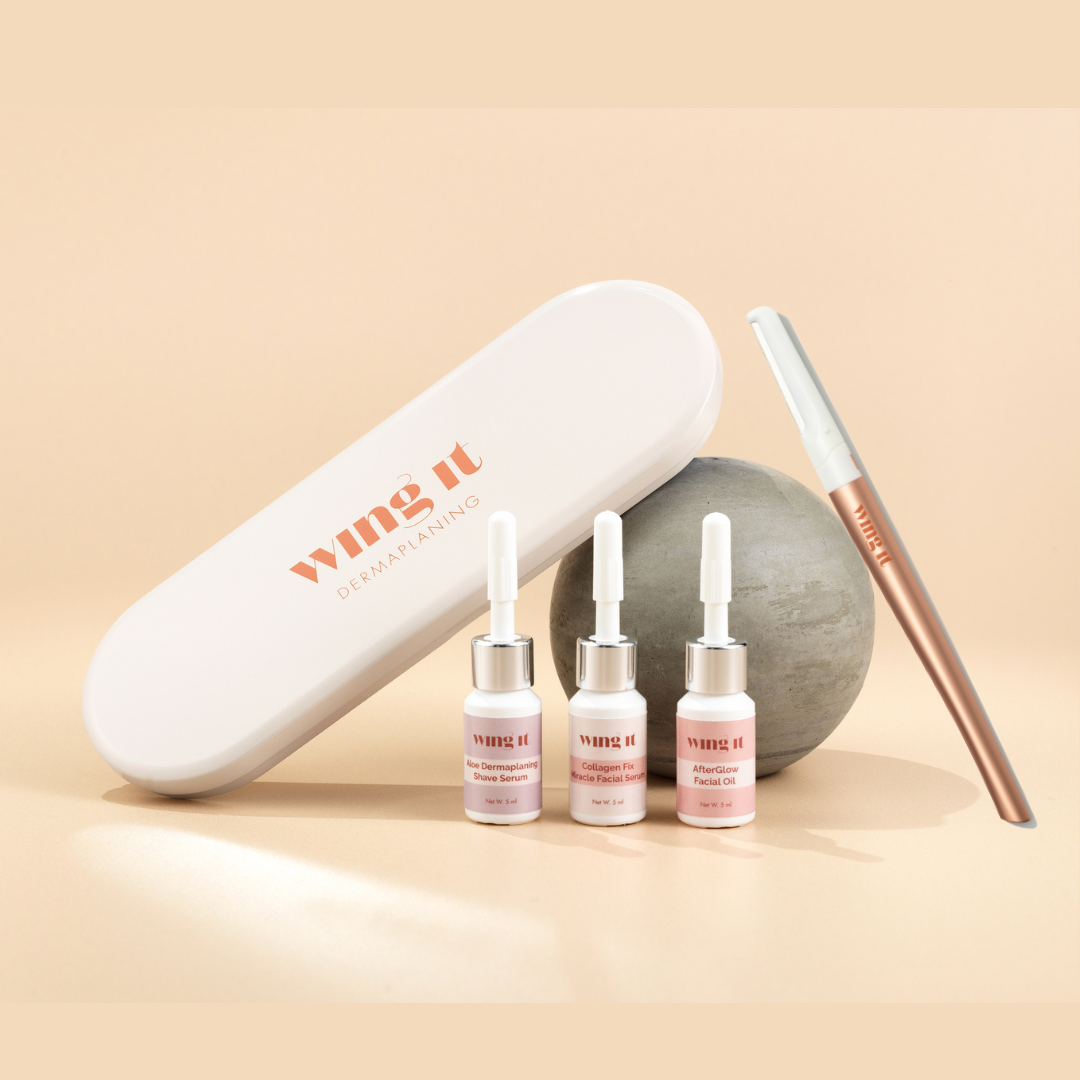
How is dermaplaning different from shaving?
In the pursuit of smooth, radiant skin, individuals often turn to various methods of hair removal. While shaving your face is a familiar technique, dermaplaning at home has gained popularity for its promise of achieving a completely flawless fuzz free complexion. However, understanding the nuances between these two methods is essential for making informed decisions about skincare routines. Let's delve into the key differences between dermaplaning at home and traditional shaving, exploring their processes, benefits, and considerations.

Understanding Dermaplaning at Home:
Dermaplaning is a non-invasive skincare treatment that involves gently exfoliating the skin and removing vellus hair, commonly known as "peach fuzz," using a specialised tool called a dermaplaning blade or also otherwise known as tinker razor. This technique is typically performed in professional settings by estheticians or dermatologists but has become increasingly popular for at-home use as with some of the tools and dermaplaning skincare you can achieve similar spa-like skin results.
Process of Dermaplaning at Home:
-
Preparation: Before dermaplaning, it's crucial to cleanse the skin thoroughly to remove any makeup, dirt, or oil. This ensures optimal results and minimises the risk of irritation. In case you've got sensitive skin or skin more prone to reaction, apply Aloe Dermaplaning Shave Serum for calming the skin and easier glide.
-
Dermaplaning: Using a dermaplaning tool held at a 45-degree angle, gently glide the blade across the skin in short, upward strokes. This helps to remove dead skin cells and vellus hair, revealing a smoother, more radiant complexion.
-
Post-Treatment Care: After dermaplaning, it's essential to rinse the skin with cool water to remove any remaining debris and apply a serum or facial dermaplaning oil to soothe and hydrate the skin.
What is the Best Tool for Dermaplaning

Introducing the ultimate solution for achieving professional-grade dermaplaning results from the comfort of your own home: the Forever Dermaplaning Razor. Crafted with luxury in mind, this golden metal razor boasts professional-grade quality and effectiveness. Designed for ease of use, its ergonomic design ensures a firm grip, allowing you to gently remove unwanted facial hair, peach fuzz, and exfoliate the skin with precision. Not only does it enhance collagen stimulation and skin rejuvenation, but it's also environmentally conscious, featuring replaceable blades and sustainable materials. Nestled within a luxurious compact tin, the Forever Dermaplaning Razor ensures the safety and hygiene of the razor and blades. For optimal results, pair it with our specially formulated dermaplaning skincare, maximizing active ingredient absorption and revealing radiant, glowing skin.
Benefits of Dermaplaning at Home:
-
Exfoliation: Dermaplaning effectively removes dead skin cells, promoting cellular turnover and revealing fresher, younger-looking skin.
-
Hair Removal: In addition to exfoliation, dermaplaning removes vellus hair, allowing skincare products to penetrate more effectively and makeup to apply more smoothly.
-
Brighter Complexion: By eliminating surface debris and vellus hair, dermaplaning creates a smoother canvas for light to reflect off, resulting in a brighter, more luminous complexion.

Understanding Traditional Facial Shaving:
Shaving is a common hair removal method that involves using a razor to cut hair at the surface of the skin. While primarily used for removing coarse terminal hairs, shaving can also remove vellus hair, although the results may differ from dermaplaning.
Process of Traditional Shaving:
-
Preparation: Similar to dermaplaning, shaving begins with cleansing the skin to remove any dirt, oil, or debris.
-
Shaving: Using a razor, glide the blade across the skin in the direction of hair growth, applying shaving cream or gel to lubricate the skin and minimise irritation.
-
Post-Shave Care: After shaving, rinse the skin with warm water to remove any shaving cream or gel residue and apply moisturiser to hydrate and soothe the skin.
Differences Between Dermaplaning at Home and Shaving:
-
Depth of Exfoliation: Dermaplaning at home provides a deeper level of exfoliation compared to shaving. The dermaplaning blade removes dead skin cells and vellus hair from the surface of the skin, resulting in a smoother texture and brighter complexion.
-
Hair Removal Technique: While both dermaplaning and shaving remove hair, they differ in their approach. Dermaplaning targets vellus hair as well as dead skin cells using a specialized blade, whereas shaving primarily removes terminal hairs with a razor.
-
Skincare Benefits: Dermaplaning offers additional skincare benefits beyond hair removal, such as improved product absorption and enhanced skin radiance. Shaving, while effective for hair removal, may not provide the same exfoliating and brightening effects.
-
Frequency of Treatment: Dermaplaning at home is typically performed less frequently than shaving. While shaving may be part of a daily grooming routine, dermaplaning is often done on a weekly or bi-weekly basis to maintain results.
Considerations for Choosing Between Dermaplaning at Home and Shaving:
-
Skin Sensitivity: Individuals with sensitive skin may prefer dermaplaning at home, as it provides a gentler exfoliation compared to shaving, which can sometimes cause irritation.
-
Desired Results: Those seeking smoother, brighter skin may opt for dermaplaning at home, as it offers deeper exfoliation and additional skincare benefits. However, individuals primarily concerned with hair removal may find shaving to be a more convenient option.
-
Time and Effort: Dermaplaning at home requires more time and preparation compared to shaving, as it involves careful exfoliation and hair removal. Shaving, on the other hand, can be done quickly and easily as part of a daily grooming routine.


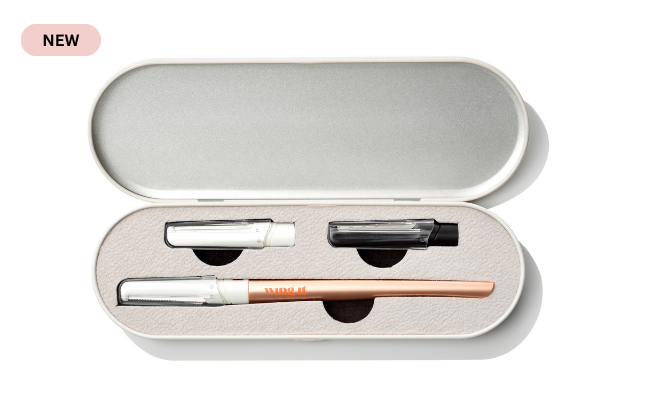
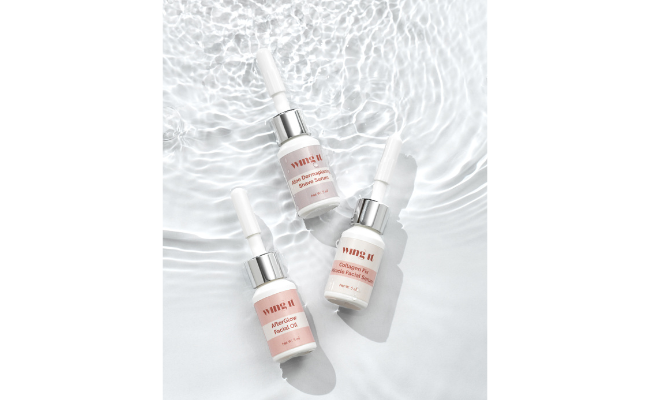
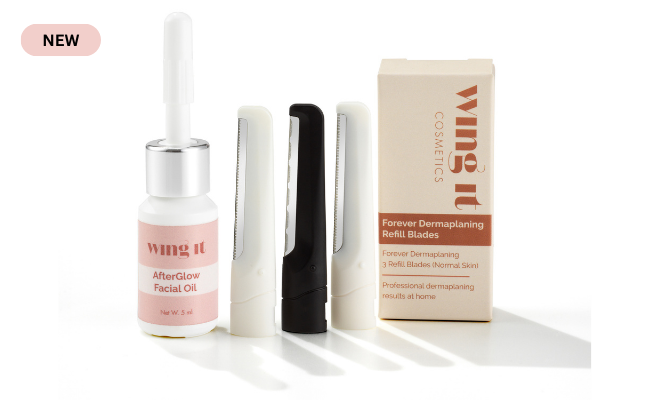

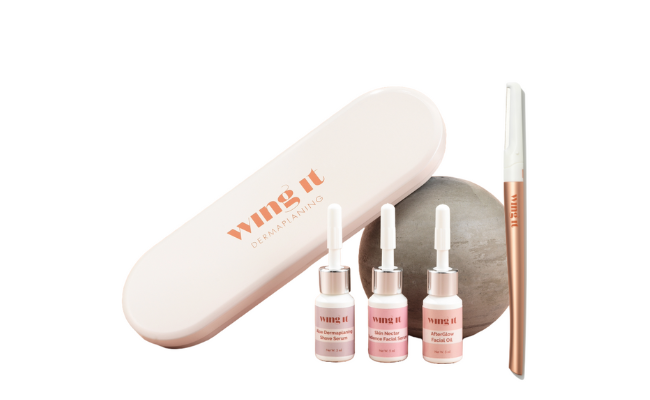

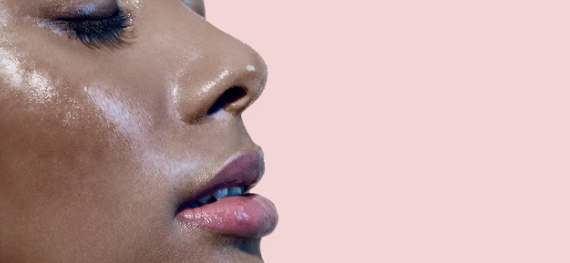
1 comment
Doing this procedure long term would eventually turn this peach fuzz thicker and darker. Its only common sense.
Patricia Keating
Leave a comment
This site is protected by hCaptcha and the hCaptcha Privacy Policy and Terms of Service apply.